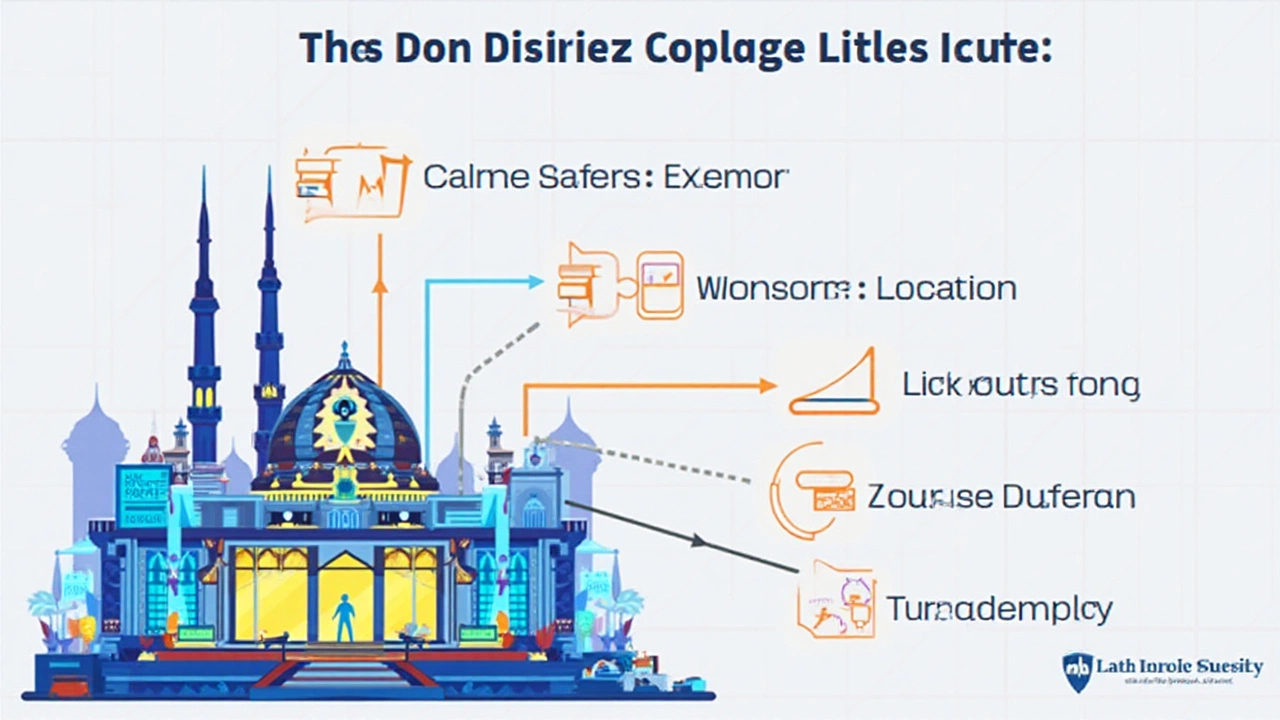Coding classes have become a gateway to new career opportunities and personal growth in the digital age. As technology continues to advance, the ability to code is becoming less optional and more essential. Whether you're a high school student paving your career path or a professional looking to upskill, coding classes can open doors that you never knew existed.
But before diving into your coding journey, understanding the typical costs associated with these courses is crucial. From traditional in-person classes to intensive online boot camps, each option has its own pricing structure. This article offers a detailed look at what to expect financially from different coding learning paths, ensuring you have the information needed to make a well-informed decision.
- Understanding Different Coding Class Formats
- Factors Affecting the Cost of Coding Classes
- Comparing In-Person and Online Learning
- How to Find Affordable Coding Classes
- Making the Most of Your Coding Education
Understanding Different Coding Class Formats
In today's digital world, the range of coding classes has expanded significantly, offering various formats to suit different learning styles and needs. The primary formats are in-person classes, online courses, and coding boot camps, each with its own unique set of advantages and challenges. Understanding these formats can guide your decision and help you get the skills you need to succeed in the ever-changing tech landscape.
In-person coding classes, often held at community colleges or universities, provide a structured environment with face-to-face interaction. This traditional format works well for learners who thrive on personal engagement and direct access to instructors. Despite the travel time and potential additional costs of commuting, many students find the immediate support and camaraderie with peers to be invaluable. Interestingly, a survey by Career Karma found that students in in-person programs often report higher satisfaction rates due to the tangible networking opportunities.
On the other hand, online coding courses offer flexibility and convenience that traditional settings might lack. With platforms like Coursera, Codeacademy, and Udacity, learners can access a plethora of courses from their living room, at their own pace. Online classes are usually less expensive compared to in-person ones, saving on costs related to commuting and physical materials. They cater to self-starters who can stay disciplined without the watchful eyes of an instructor. A significant advantage of this format is the ability to learn from top industry professionals globally, breaking geographical barriers and exposing students to cutting-edge practices.
"The learning process is different online, but it's not necessarily worse," says David Malan, famous Harvard CS50 instructor. "It simply requires a different set of skills and discipline."
Coding boot camps represent a more intensive and immersive experience for those seeking to learn coding skills quickly. Often lasting only a few months, these boot camps are designed to prepare participants for a career switch or to enhance their current skill set. While they can be a steeper investment up front, their accelerated format and strong industry connections can lead to job placements post-graduation. According to a study by Course Report, the average boot camp graduate sees a 51% increase in salary income after completing the program, proving their efficacy in turning beginners into industry-ready professionals.
Each coding class format offers distinct benefits conducive to specific learning preferences and personal circumstances. If you enjoy structured learning and direct contact, in-person courses are the way to go. For those valuing flexibility, online options are a feasible choice. If you're ready to dive deep and commit intensively, a boot camp could be your best bet. Weighing these options against your learning style, budget, and time commitment is essential to choosing the right path. Ultimately, the format that aligns with your goals, schedule, and financial situation will likely yield the most fruitful results.
Factors Affecting the Cost of Coding Classes
The price of coding classes can vary dramatically based on several key factors. Firstly, the mode of delivery is a significant determinant. In-person classes often cost more than online ones due to the additional resources needed, including physical space and in certain instances, specialized equipment. Online courses are typically cheaper, mainly because they forego these overhead expenses, allowing instructors to reach more students without location constraints.
An institution's reputation also plays a crucial role in pricing. Prestigious universities or well-known tech schools can justify a higher fee due to their brand, experienced faculty, and potential networking opportunities. Students are often willing to pay a premium for this kind of credential since it provides a level of assurance about the quality of education. Start-ups and smaller platforms may offer similar courses at lower prices, but they might lack the same industry recognition.
The curriculum itself is another influencing factor. A comprehensive program covering multiple programming languages, intense real-world projects, and mentorship will generally cost more than a basic or beginner course. Courses that focus on specific, in-demand languages or technologies such as AI or blockchain might also attract higher fees due to their potential career impact. Detailed curriculums demanding more educator involvement and resources are priced to reflect these additional efforts.
"Quality education is an investment, and in the world of coding where innovation is rapid, choosing the right class is akin to choosing the right long-term asset," says Sara Mitchell, a career advisor at a leading tech firm.Additionally, the level of personalization offered can affect costs. One-on-one tutoring or courses with limited seats promise individual attention, usually translating to higher prices. Larger classes or self-paced options often provide less direct interaction but may be substantially cheaper as a result.
Programming courses can vary by duration and intensity, which directly ties to how much they cost. Short crash courses designed to teach a specific skill might not be as expensive as an extensive boot camp designed to transform a beginner into a job-ready developer. Boot camps, especially those with job guarantee clauses, often come with a steeper price tag due to their high intensity and high reward nature. Below is a typical pricing structure based on duration:
| Duration | Average Cost (USD) |
|---|---|
| Short Courses (2-4 weeks) | 200 - 500 |
| Boot Camps (8-12 weeks) | 5000 - 15000 |
| Extended Programs (6 months+) | 8000 - 20000 |
Financial aid and scholarships can sometimes offset these costs. Many organizations recognize the importance of coding skills and offer financial aid to help make learning accessible to all. Some programs even provide income-share agreements, where students pay a portion of their salary post-employment rather than upfront fees. This payment plan can significantly influence the perceived cost of an educational investment, offering relief for those who might find the initial cost prohibitive.

Comparing In-Person and Online Learning
In the realm of coding classes, the decision between in-person and online learning can significantly affect your educational experience and budget. In-person classes have long held the spotlight for traditionalists who appreciate the structure and social interaction they offer. These classes typically provide face-to-face interactions with instructors, immediate feedback, and direct access to resources such as labs and libraries. The classroom environment can foster a sense of community among learners, encouraging collaboration on projects and facilitating networking opportunities that are crucial in the tech industry. Students often find a structured schedule helpful, as it forces them to allocate dedicated time to attend classes, participate in discussions, and complete assignments.
Online coding classes, on the other hand, have revolutionized how people gain tech skills. Their rise in popularity is largely due to flexibility and accessibility. You can often work at your own pace, which is ideal for those balancing a job or personal commitments. With advancements in technology, online platforms provide rich multimedia experiences, including video lectures, interactive coding exercises, and virtual labs. Many online learners appreciate the ability to replay complex lessons as often as they need, ensuring that they fully understand the material before moving on, something that is rare in traditional classrooms.
Cost considerations can't be ignored when comparing the two modes. In-person classes often incur additional costs such as commuting, meals, and materials, whereas online courses generally have fewer overhead expenses, translating to lower tuition fees. A study by EdTech magazine found that about 75% of students reported saving money by choosing online courses over traditional ones. However, it's important to remember that some online programs might require expensive technology or software subscriptions, slightly offsetting the lower course fees.
"E-learning will not replace the classroom because it can’t propagate social interaction that is the essence of traditional education. But, it certainly offers an unmatched level of convenience and customization," says Anant Agarwal, CEO of edX.
Course delivery isn't the only factor to consider; the nature of coding itself influences the choice. For instance, coding languages and techniques that require hands-on hardware experiences, like robotics programming, may benefit more from in-person instruction. Conversely, software-oriented courses like web development can thrive in an online format where access to comprehensive digital resources and forums is a few clicks away. Whether you opt for in-person or online programming courses, understanding your own learning style and needs will guide your decision, ensuring that you invest wisely and gain the skills necessary to thrive in the tech industry.
How to Find Affordable Coding Classes
Finding affordable coding classes might seem daunting in a world where premier boot camps and university courses often come with hefty price tags. The good news is that with some effort and resourcefulness, anyone can uncover options that won't break the bank. The key lies in being open to various learning platforms and strategies. One effective method is exploring MOOCs (Massive Open Online Courses), which provide a diverse range of programming courses from beginner to advanced levels. Websites like Coursera, edX, and Udacity offer high-quality courses developed by renowned universities and companies at a fraction of the cost or sometimes even for free. Payment often becomes necessary only if you seek to acquire a certified certificate.
Scholarships and financial aid options are another route worth exploring. Many online coding platforms and bricks-and-mortar institutions provide financial support to make their courses accessible. Some coding boot camps, in particular, are committed to improving diversity in tech and offer partial or full scholarships for underrepresented groups. Additionally, pay attention to Income Share Agreements (ISAs), where you only start paying for your education after landing a job in the field. This approach allows you to focus on learning without the immediate financial burden.
Another excellent tip is leveraging community resources. Local libraries, community colleges, and tech hubs often host free or low-cost coding sessions or workshops. These classes might not cover every topic under the sun but can serve as excellent introductions and networking opportunities. Don't underestimate the power of joining a community of learners. In a survey conducted by the International Journal of Educational Technology, 78% of participants found study groups to be a significant factor in their learning progress. Participation in online forums like Stack Overflow, GitHub, or Reddit also provides free access to a wealth of information and personal experiences shared by fellow learners and professionals.
Examining free trial periods offered by coding platforms can also be advantageous. Some platforms allow you to access full course material for a limited time. Utilize these trials to gauge whether their course offerings align with your learning style and goals before committing financially. As a notable source once put it,
"The best way to learn to code is to dive right in, and with so many resources available, there's no need to go for broke."Another practical step is taking advantage of student discounts if you're a student. Some platforms offer reduced rates to learners in educational institutions, making it worthwhile to check if such discounts are available to you.
Lastly, it's important to focus on developing a personal budgeting plan for your education expenses. Determine how much you're willing to spend and stick to that budget. By staying disciplined and thoroughly researching the options, you can find a balance between cost and quality, ensuring you gain the knowledge and skills needed in the most economically viable way. Remember, the journey to acquiring coding skills doesn't have to be expensive, but it does require dedication and a smart approach.

Making the Most of Your Coding Education
In the bustling world of technology, making the most of your coding education can be transformative. A coding class is not just a stepping stone but a foundation that can shape your professional journey. Embracing this opportunity requires a strategic approach. First, consider setting clear and realistic goals. Understand what you aim to achieve with your coding skills—whether it's building apps, contributing to open-source projects, or even launching a new startup. These goals will keep you motivated and focused throughout your learning journey.
Engagement is key. Participating actively in class discussions, joining coding communities, and engaging in collaborative projects allow you to absorb knowledge effectively. Many online platforms offer interactive sessions and peer learning opportunities, which are invaluable for deepening your understanding. It's important to not just passively consume information but to actively engage with the material and your peers. Joining forums like Stack Overflow or subreddits dedicated to programming can expose you to diverse problem-solving techniques and contemporary coding practices.
Building a portfolio is another crucial step. Successfully completing projects can do wonders for learning retention, and having a tangible portfolio showcases your skills to potential employers. Even simple projects can demonstrate your coding capabilities, creativity, and dedication. As your confidence grows, tackle more complex challenges. Consider contributing to open-source projects, which is a fantastic way to build credibility and learn from experienced developers. It’s a thriving community that rewards contribution and innovation.
"Contributing to open source is a phenomenal way to gain real-world experience and collaborate with skilled developers across the globe," says Linus Torvalds, creator of Linux.
Continuous learning is essential in the coding world, where technologies evolve rapidly. Dedicating time to updating your skills and learning new languages or frameworks can pay off. Online platforms frequently update their courses to reflect current industry trends, making them ideal for lifelong learners. Consider leveraging platforms such as Coursera, Udemy, or Khan Academy, which offer a myriad of coding classes that cater to various skill levels.
Collaborate with Peers and Mentors
Networking with peers and seeking mentorship can greatly enhance your learning curve. Engaging in hackathons, coding meetups, or tech conferences can connect you with like-minded individuals who inspire and support your learning endeavors. Mentors provide insights and guidance, helping you navigate challenges more effectively. Many coding boot camps and courses offer mentorship programs that can be incredibly beneficial.Remember that the coding journey is as much about resilience as it is about skill acquisition. Perseverance, patience, and practice are crucial elements. The obstacles you encounter along the way often serve as your greatest teachers. Embrace setbacks as learning opportunities and persist in refining your skills. Coding is an art form as much as it is a science, requiring both logical thinking and creative problem-solving. Combining these skills can lead to exceptional results and a rewarding career path.
Finally, take care of your well-being. Spending hours staring at screens can be taxing, both physically and mentally. Regular breaks, mindfulness practices, and physical activities are essential to maintaining a healthy balance. Nurturing your mental and physical health will ensure that your coding learning journey is sustainable and fulfilling. Remember, technology is a tool for empowering creativity and solving problems, and your coding skills unlock your potential to make meaningful impacts in this fast-evolving digital landscape.
